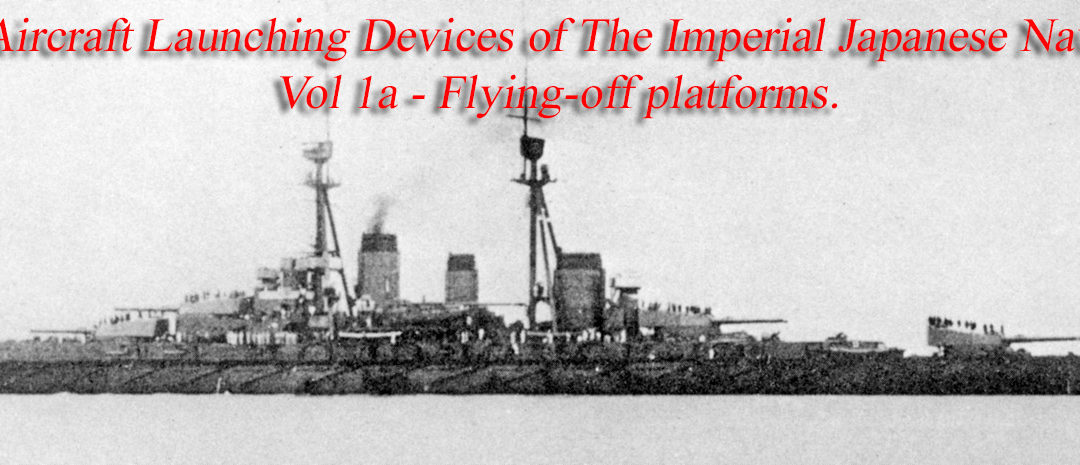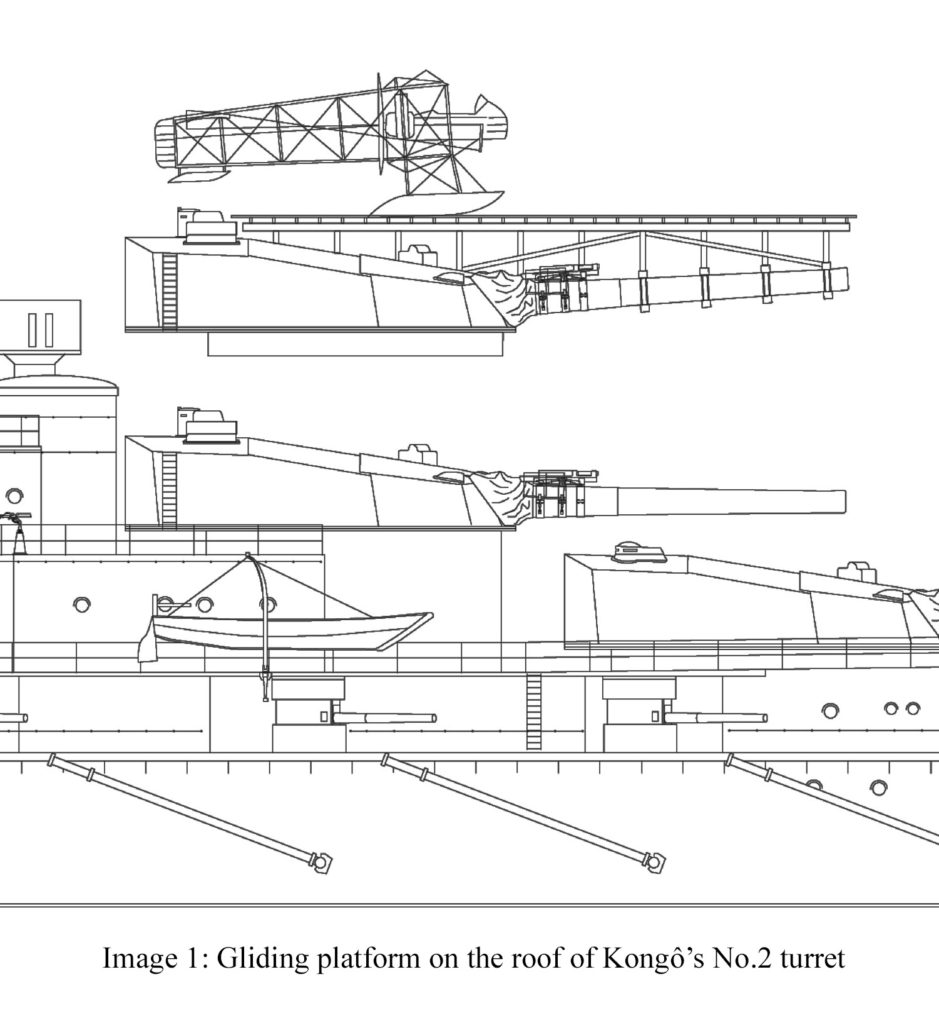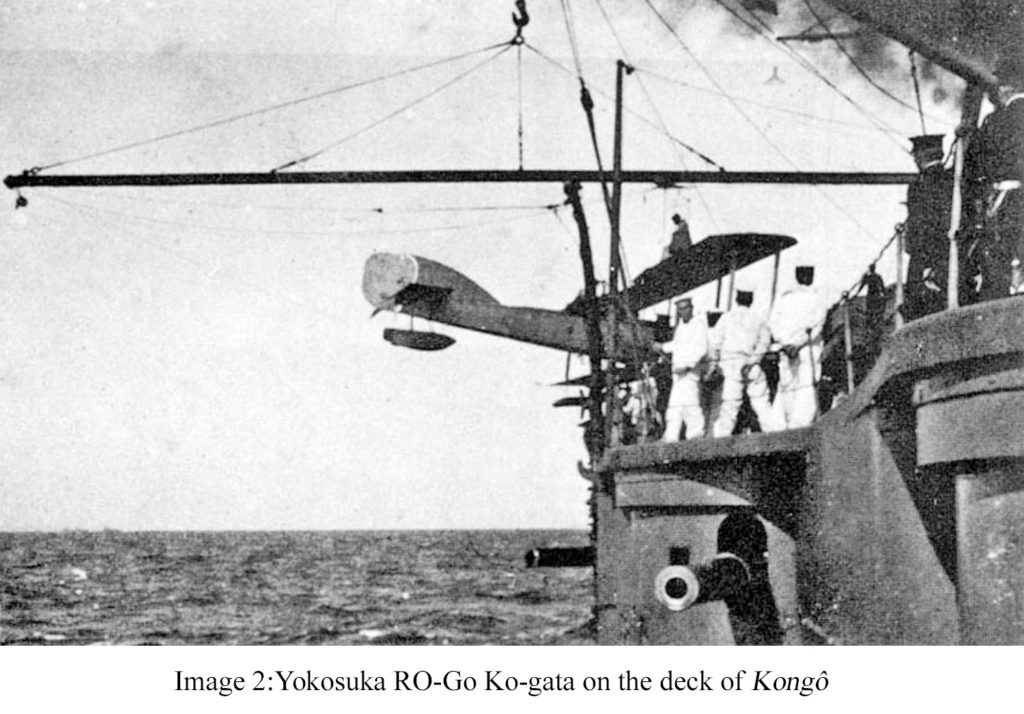By Joseph Ed. Low, and Sander Kingsepp
This is the first of a series of articles that explores the history of aircraft launching devices used by the Imperial Japanese Navy (IJN). The series will start with flying-off platforms and will eventually also cover catapults.
Although the IJN was best known during World War 2 for its carrier-based aircraft, another less well-known aspect of its naval aviation was the use of aircraft and seaplanes from non-carrier type vessels. Aircrafts were launched from naval vessels with a variety of devices starting initially with flying-off platforms, and eventually with power catapults both from surface ships and submarines.
The first launch of an aircraft from a ship was performed by the American pilot Eugene Ely who took off from a ramp built over the bow of the light cruiser Birmingham on November 14th, 1910. In the IJN, the earliest experiment conducted with launching aircraft from a ship involved the battlecruiser Kongô [1]. Aircraft were prized because they allowed the interception of enemy aircraft/balloons, detection of enemy ships at a greater distance, and were much more effective than ship-based observation platforms in the reporting of the fall of shots from the ship’s main guns at distance.
Several Japanese references suggest that a flying-off platform was installed on the roof of Kongo’s No.2 turret as early as 1919 [3]. Although there is no photographic evidence of this event, a drawing with a possible configuration for this platform is included here [1]. This was probably a wooden platform which allowed a lightweight aircraft to take off into the wind with speed generated by its engine and gravity which pulls the aircraft down the platform, and the wind from the forward motion of the ship. The aircraft was a floatplane which would allow water landing and eventual recovery by ship using a simple derrick. It is known that several different types of floatplanes were tested including two Farman type hydroplanes (possibly MF.7?), and an unidentified Short type (possibly Type 184?) for gunnery spotting test. None of this could be confirmed with photographs.
Photographic evidence does support testing with a Yokosuka RO-Go Ko-gata, a reconnaissance floatplane in 1919 [4]. It was on board during a training sortie off the Chinese coast on 19-30 August 1921. This was one of the first indigenous Japanese aircraft to enter production at the Yokosuka Naval Arsenal. The floatplane was most likely launched using the above-mentioned take-off platform and recovered using her derrick.
References
| [1] | J. E. Low, The Kongo Class Battleship of the Imperial Japanese Navy. Volume 3 – Kongo. Technical and Historical Development. 1913 to 1944, Ann Arbor: Kindle Direct Publishing, 2022. |
| [2] | Maru Special. Japanese Naval Vessels No.112, Tokyo: Maruzen Co., Ltd., 1986. |
| [3] | T. Ishibashi, Illustrated Ship’s Data of IJN 1868-1945. Vol.1/Battleships and Battlecruisers, Tokyo: Takao Ishibashi, 2007. |
| [4] | K. Ishiswata, Ships of the World, Tokyo: Kaijinsha Co., Ltd., 1976. |
Further Research by Dr Joseph E Low
Interested in reading more by Dr Joseph E Low? He has extensive publications available at Amazon for you to access.





Recent Comments